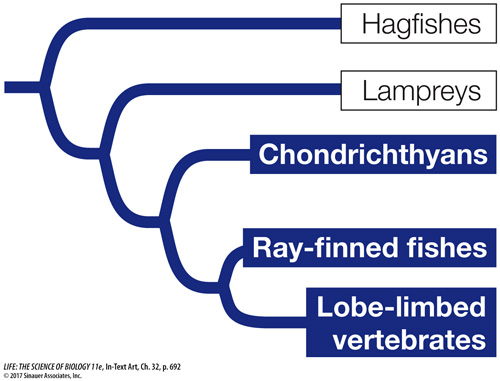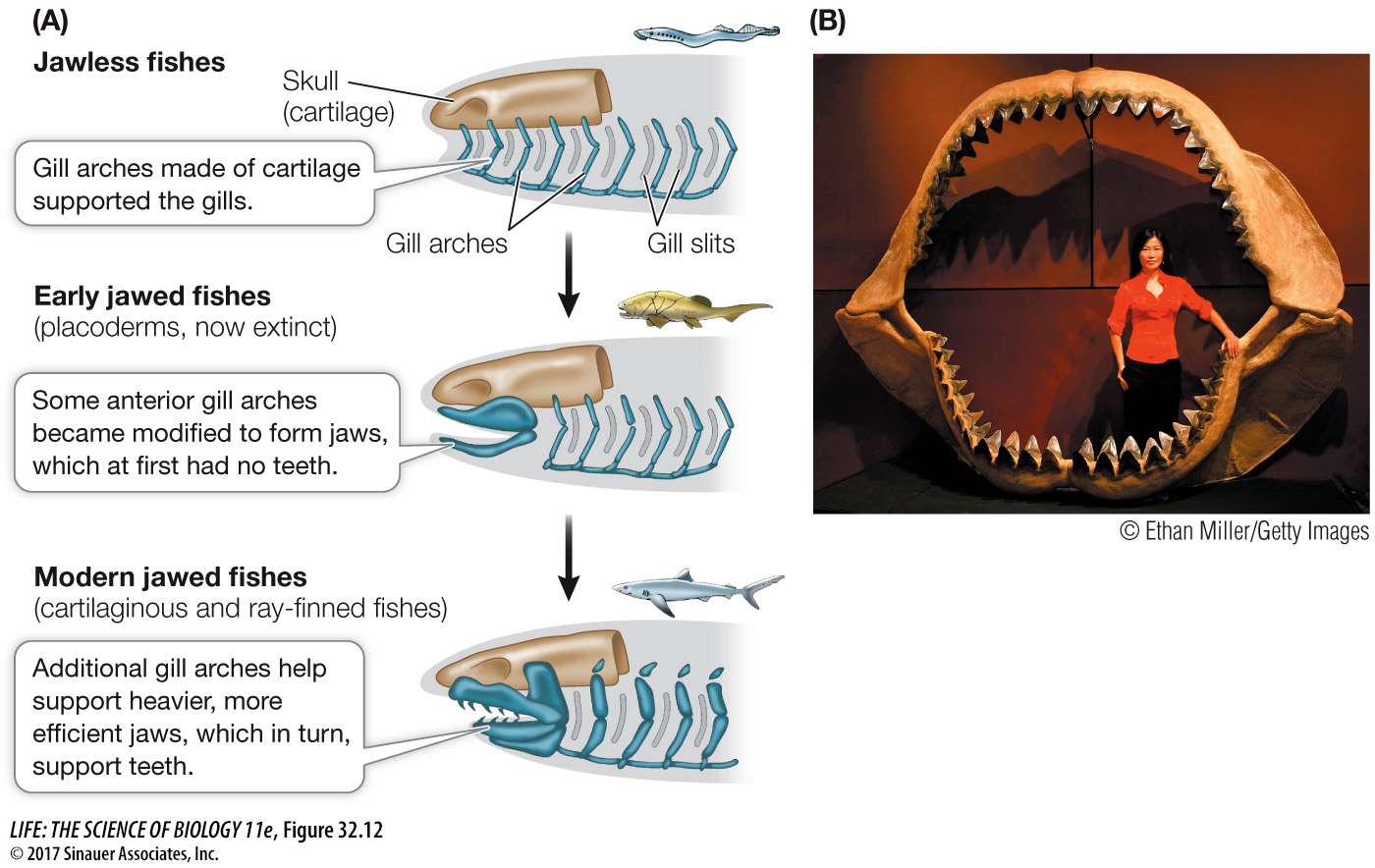Jaws and teeth improved feeding efficiency

Many kinds of jawless fishes were found in the seas, estuaries, and fresh waters of the Ordovician, Silurian, and Devonian periods, but hagfishes and lampreys are the only jawless fishes that survived beyond the Devonian. Late in the Ordovician, some fishes evolved jaws via modifications of the skeletal arches that supported the gills (Figure 32.12A). Those fishes and their descendants are referred to as gnathostomes (Greek, “jaw mouths”). Jaws greatly improved feeding efficiency, as an animal with jaws can grasp, subdue, and swallow large prey. Jawed fishes rapidly diversified during the Devonian period, eventually replacing the jawless fishes in dominance of the seas.

693
The earliest jaws were simple, but the evolution of teeth made feeding even more efficient (Figure 32.12B). In predators, teeth function crucially both in grasping and in breaking up prey. In both predators and herbivores, teeth enable an animal to chew both soft and hard body parts of their food organisms. Chewing also aids chemical digestion and improves an animal’s ability to extract nutrients from its food. Vertebrates are remarkable in the diversity of their jaws and teeth, and in their physiological adaptations for *digestion of a wide variety of food items.
*connect the concepts The many physiological adaptations of vertebrates for digesting plants and animals are described in detail in Chapter 50.